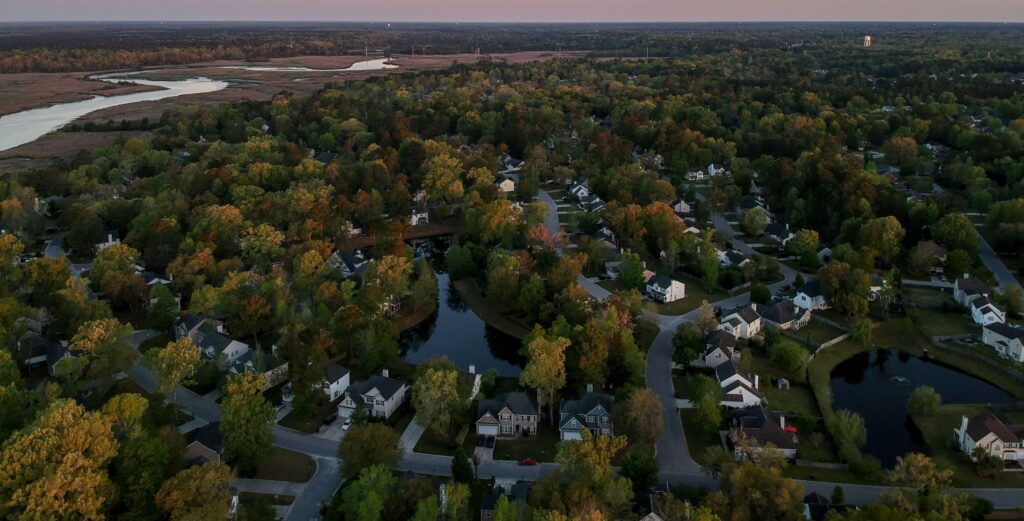Many people this week have seen news coverage about First Street Foundation’s new Flood Factor model. We thought it might be helpful to answer some frequently asked questions about our perspective on this launch and the role of flood risk data in adaptation.
What is the new First Street Foundation data?
On June 29th, First Street Foundation released new, detailed flood risk data for 142 million properties in the United States. This included the unveiling of Flood Factor, a new flood data platform that helps people to understand a property’s past, present and future flood risk. The online, interactive tool provides a score from 1 to 10 for each property based on their cumulative risk of flooding over 30 years, the typical length of a mortgage.
Why is this data important?
First Street’s data, and other open-source datasets, can serve as important complements to existing sources of flood risk data such as FEMA maps. FEMA maps are important tools for informing emergency response plans and floodplain management. However, they were designed to set insurance rates and for use by decision-makers, and technical experts—not as communication tools for the general public to understand actual flood risk. This often leaves average Americans navigating the alphabet soup of AE, X, and V zones and having a difficult time understanding how concerned they should be about flood risk. FEMA maps can also create a false sense that flood risk is binary by focusing on whether a property is “inside” or “outside” of a flood zone. Because this designation is binary, it does not provide any indication of risk magnitude for individual properties.
This communication challenge is compounded by the fact that FEMA’s maps significantly underestimate risk. They often are outdated, do not account for sea level rise, and overlook rainfall and riverine flooding. This can lead to substantial consequences for property owners. For instance, 68% of the homes that flooded in Harris County, Texas, during Hurricane Harvey were outside FEMA’s Special Flood Hazard Area, which designates areas of mandatory flood insurance coverage. This means that most of those 68% of homeowners were likely heavily underinsured or uninsured. First Street’s data gives homeowners and prospective homebuyers an easy and inexpensive way to check the flood risk of a given property and use it to make better-informed decisions.
What are some of First Street’s key findings?
- First Street identifies 14.6 million properties that have a substantial risk of flooding, a number nearly 68% higher than the 8.7 million substantially at-risk properties identified by FEMA. In other words, nearly six million property owners in the U.S. may be underestimating their current flood risk. When adjusting for projected sea level rise, increased rainfall intensity, and stronger storms, First Street estimates the number of substantially at-risk properties will climb to 16.2 million by 2050.
- For inland states that are less well-mapped by FEMA, First Street’s maps tend to deviate from FEMA’s more significantly. First Street found that there are roughly four times more properties at substantial risk of flooding in Utah, Wyoming, Montana, and Washington, D.C. However, coastal areas have greater flood risk in terms of the total number of properties with substantial risk. The three states with the highest number of properties with substantial risk are Florida, Texas, and California.
- While flood risk for inland cities and states is relatively constant, coastal areas face a high increase in risk over time. For example, Louisiana will see a 69.7% increase in the proportion of properties with substantial risk, whereas Colorado will see a 2.4% increase.
- In over two-thirds of states, First Street found that areas with more minority populations were more likely to have inaccurate FEMA maps. This is likely related to communities’ tendencies to invest in flood protection for areas with higher incomes and property values.
How should (and shouldn’t) the data be used?
This tool and data may be useful in helping individuals and community leaders understand risk and make broad management and planning decisions. Potential good uses could include:
- Risk Awareness: This data gives communities a quick and free picture of their flood hazard at both the property and community levels. In order to obtain even screening level data, communities would previously have had to pay for detailed modeling or a flood risk assessment study. While such detailed studies are essential for local planning efforts, they can cost tens of thousands to hundreds of thousands of dollars, a significant financial hurdle for smaller communities or for those with tight budgets.
- Planning: This data can help communities understand gaps in FEMA maps, especially in smaller, rural, and inland communities, and prioritize areas in need of future mapping. It can also help identify potential hazard mitigation opportunities by providing an overview of flood risk not captured by FEMA maps. Finally, it can help communities conduct proper emergency response planning and actions, but it does not replace the need for comprehensive planning exercises such as vulnerability assessments or stormwater master planning.
This tool and data should not be used for:
- Risk Quantification: This data complements but does not replace FEMA’s maps or detailed coastal and stormwater modeling needs. It should not be regarded as an authoritative source of flood hazard information for engineering design or for insurance ratings.
- Regulatory Decision-Making: This data does not lessen the urgency to improve the FEMA flood maps, which dictate important decisions like mandatory purchase of flood insurance. It should also not be used to set a Base Flood Elevation for permitting or determining local building codes and zoning ordinances.
The launch of First Street’s data is a significant step towards ensuring that communities of all sizes and types now have equal access to flood risk data as a starting point for or complement to local mapping and planning actions. Granted, availability of flood risk data on the web does not mean all communities and their residents will be able to act on the new information immediately, as neither risk nor access to assistance is distributed evenly. While there is still much work to be done to create equity in adaptation for vulnerable communities, this data release should be considered by local leaders as a tool for informing and motivating fairer investment and more equitable protection of communities and their infrastructure.






